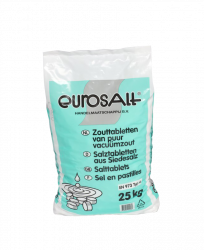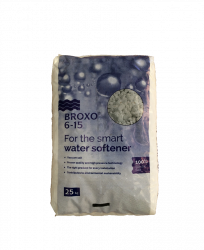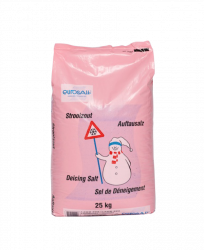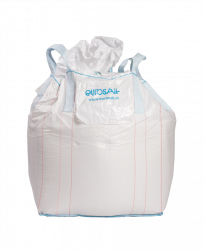Salt in Germany
The Federal Republic of Germany (German: Bundesrepublik Deutschland), in short Germany (German: Deutschland), is a country in Central Europe. It has a territory of 357,022 km² and borders the Baltic Sea, the North Sea and Denmark to the north, Poland and the Czech Republic to the east, Austria and Switzerland to the south and France, Luxembourg, Belgium and the Netherlands to the west. With 80,594,017 (2017) inhabitants, Germany has the largest population of any country in the European Union. The capital and largest city of the country is Berlin.
The German nation-state came into being in 1867 with the founding of the North-German Union. In 1870/1871 some southern German states joined the union and the whole was called the German Empire. With the abolition of the monarchy after the November Revolution of 1918, this state became a republic for the first time; the so-called 'Weimar Republic'. The current name of the state, Federal Republic of Germany, dates from 1949. Since 1 January 1957, the Saarland was (again) part of Germany, and in 1990 German reunification took place, of the old Federal Republic of Germany (West Germany) and the German Democratic Republic (East Germany). In that year, the six East German states joined the Federal Republic.
Road salt is also a generally accepted de-icing agent in Germany. It lowers the freezing point of water. The salt (almost always sodium chloride, NaCl, sometimes calcium chloride, CaCl2) mixes with the water present (ice or snow) to form brine. Because brine has a lower freezing point than water, it will freeze less quickly so that less slipperiness occurs. After sprinkling salt, there must be sufficient traffic to get a good mixture. Brine is a mixture of water and salt. When a substance is dissolved in water, the freezing point of the solution drops. For example, if water contains 1 molal of sodium chloride, the freezing point will be lowered by about 1.86°C. The freezing point reduction can be calculated using cryoscopic constant. At lower and lower temperatures sodium chloride becomes less effective. To still melt ice, calcium chloride can be used, which is however much more expensive.
Wet salt in Germany
Nowadays wet salt is mostly used. In that case, the spreading machine is equipped with liquid tanks (usually on the side), in which pre-mixed brine is stored. The dry salt is mixed with brine before it is released, where the salt grains clump together. The advantage of this is that the mixture is more homogeneous than dry salt, allowing it to be scattered much more accurately. In addition, much less dust is created behind the spreader. It is therefore possible for the spreader to drive faster, up to 70 km/h (against a maximum of 40 km/h with dry salt spreading). Wet salt also adheres better to the road surface due to crystallization and because wet salt blows less quickly, it is also suitable for preventive spreading.
Effects of brine in Germany
Spreading salt is not without risk. For example, car bodies need to be well protected against oxidation because brine reacts strongly with metals.
Another influence is the salinization of the soil next to the road, which affects the flora's environment. For example, salt-loving plants, such as English grass, can be found along many roads, far from the coasts where they are normally found.
However, due to increasingly sophisticated equipment and new techniques, such as wet salt spreading, the accuracy with which the salt is brought onto the road has been greatly increased in recent years, which has resulted in a lower environmental impact. Not only is the dosage used a lot lower than before (often only 10 g/m2 is spread), also much less is spread on the verge.




